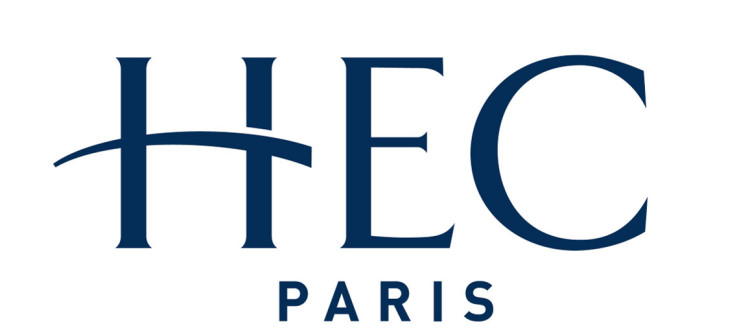- Leadership
Leading Effectively in Aerospace & Aviation
How HEC Paris helps aerospace executives broaden their mind-sets to face the challenges of innovation and change
The world is a very different place compared to what it was at the turn of the millennium. Advances in technology, feats of engineering, data availability, analysis and application, economic shifts and our own societal priorities have all impacted the ways in which we live and work, regardless of where in the world we happen to be based, or what our professional functions may be.
With this evolution has come the pressing need for heads of industry, our global leaders and innovators to develop and expand their skills, knowledge and outlook in order to compete globally, embrace new opportunities and not be left behind. For any executive faced with increased responsibility for business expansion, the challenge of tackling an increasingly unrecognisable market is understandably daunting.
The most obvious solution for bankers, consultants, corporate heads and other such professionals is to head to business school. Returning to the classroom to engage with other industry leaders facing similar challenges can help broaden their mind-sets, and provide clarity and direction – not to mention developing those greatly needed new skills.
Pursuing a business education may perhaps not seem to be the most obvious solution for executives and managers operating in the aerospace and aviation sector, but they have the same needs. However this is, perhaps, one industry where the level and pace of change, growth and development has been more apparent than any other.
........................................................................................................................
Learn more about the Aerospace & Aviation Certificate at HEC Paris
........................................................................................................................
A RAPIDLY EVOLVING AND INCREASINGLY COMPLEX INDUSTRY
The aerospace and aviation sector has undergone profound changes at every level since the year 2000, and not in the ways typically faced by other sectors. Progressive, futuristic feats of engineering such as Concord have been prematurely retired to the history books, hindered not only by high running costs but also by its heavy impact on the environment. The increased threat to security and safety following the events of September 2011 have impacted everything from aircraft design, customer booking and screening procedures at airports and the monitoring of flights as they traverse the globe. New global competitors have emerged, with Middle Eastern and Asian airlines now standing shoulder to shoulder with the accepted industry leaders in the UK and US. And, in the race to provide the very best in customer experience, advances in both luxury and budget flights have accelerated at a rapid pace.
When facing such drastic and varied change, capitalizing on a business education program to navigate the future of the aerospace and aviation sector is a worthwhile investment.
It certainly was for me. Though I had developed an extensive career history in IT consulting whilst living in Canada, upon relocation to France I began consulting for an IT firm operating within the aerospace and aviation sector. However, to transition into this role effectively and acquire the industry acumen and skillset – not to mention building up my network of industry contacts – an acquaintance recommended the Executive MBA at HEC Paris and, with it, a specialization offered by the school in Aerospace and Aviation.
Each participant enrolled on the Executive MBA at HEC Paris is required to select a specialisation, choosing from a wide list of possibilities, all more suited to the typical business school experience, at least on paper; entrepreneurship and innovation, energy, social business, digital transformation and so on. The Aerospace & Aviation Certificate was a new offering in 2008, designed for executives operating within the sector to develop analytical and decision-making skills, support the creation of new business models and challenge existing practices.
FROM PROGRAM PARTICIPANT TO ACADEMIC DIRECTOR
I was to be part of the inaugural cohort. There was no record of what had come before to learn from, no former participants I could speak with and no tangible evidence of how this could impact my career afterwards. Despite this, I was sufficiently intrigued.
The Certificate provided a global view of the industry and all of its facets – from airline management to aircraft construction to customer experience, giving participants the opportunity to view the sector through a business lens as opposed to their individual engineering or service roles. As well as building the core skills to pursue my career aspirations, this perspective enabled me to better understand the dynamics and complexities at play in the global aerospace and aviation market. It also allowed me to grasp the challenges that come with introducing innovations and ideas to an industry that often faces high levels of regulation and scrutiny, and understand how to navigate them effectively.
More than that, my classmates, hailing from small innovative start-ups, large established aerospace and aviation firms, military and even space exploration backgrounds enabled me to understand how aerospace and aviation works beyond the commercial sector and, by working together on Team Research Projects, how each part can collaborate to encourage opportunities for innovation. It was this view that has helped me to develop as a coach and consultant.
The differences between this sector and any other large-scale corporation are not as apparent as you would expect. Like in any other sector, those operating in the aerospace and aviation industry face the challenge of remaining profitable in times of economic uncertainty and rising competition from other countries, particularly for larger airlines which must continually go up against low-cost providers. OEMs are hindered in their operations due to changing trade laws and rising costs for materials. Large organizations face adapting their structures to become more agile, to employ new technologies in their day-to-day practices and keep pace with smaller, younger and increasingly popular firms
The program has played a significant part in my future career development. Since graduation, I have remained part of it – mentoring current participants through project work, assisting with student intakes and recruitment. Almost a decade after enrolling as part of the first cohort, I have now taken on the role of Academic Director in addition to my coaching and consultancy contracts.
Today’s program has evolved significantly since it’s 2008 debut but is just as relevant for aerospace and aviation industry executives, who sit at the forefront of an industry continually pushed by the extremes of technological development. Today’s aerospace and aviation leaders, like other business professionals must consider the impact of Additive Manufacturing, AI, big data, connectivity and ever-smarter IT functions and how these will impact upon the industry. They hold greater accountability to the world in ensuring their practices are safe, ethical and sustainable.
It is not just the Richard Bransons and Elon Musks of the world who should driving innovation in the industry. Existing players (OEMs, operators, MROs…) and start-ups should be encouraged to work together and cross-fertilise civil and military approaches, whether it originates from military, commercial aviation or space, to develop more efficient aircrafts, reduce waste, lowering emissions, designing new safety features or improving customer experience. Given the right opportunities, we can make this happen. Programs such as this one help convince aerospace and aviation leaders that it is possible.
ARTICLES YOU MIGHT LIKE
RESEARCH
A recent study examines shared leadership configurations and their effectiveness in teams
DEVELOPING LEADERS QUARTERLY MAGAZINE AND WEEKLY BRIEFING EMAILS


































